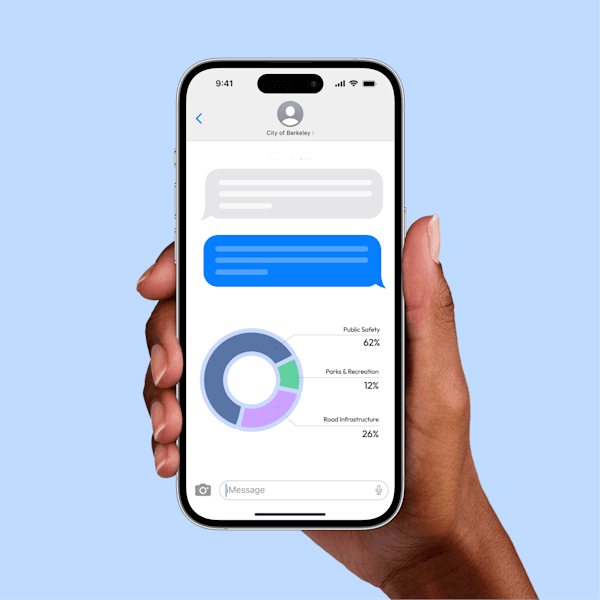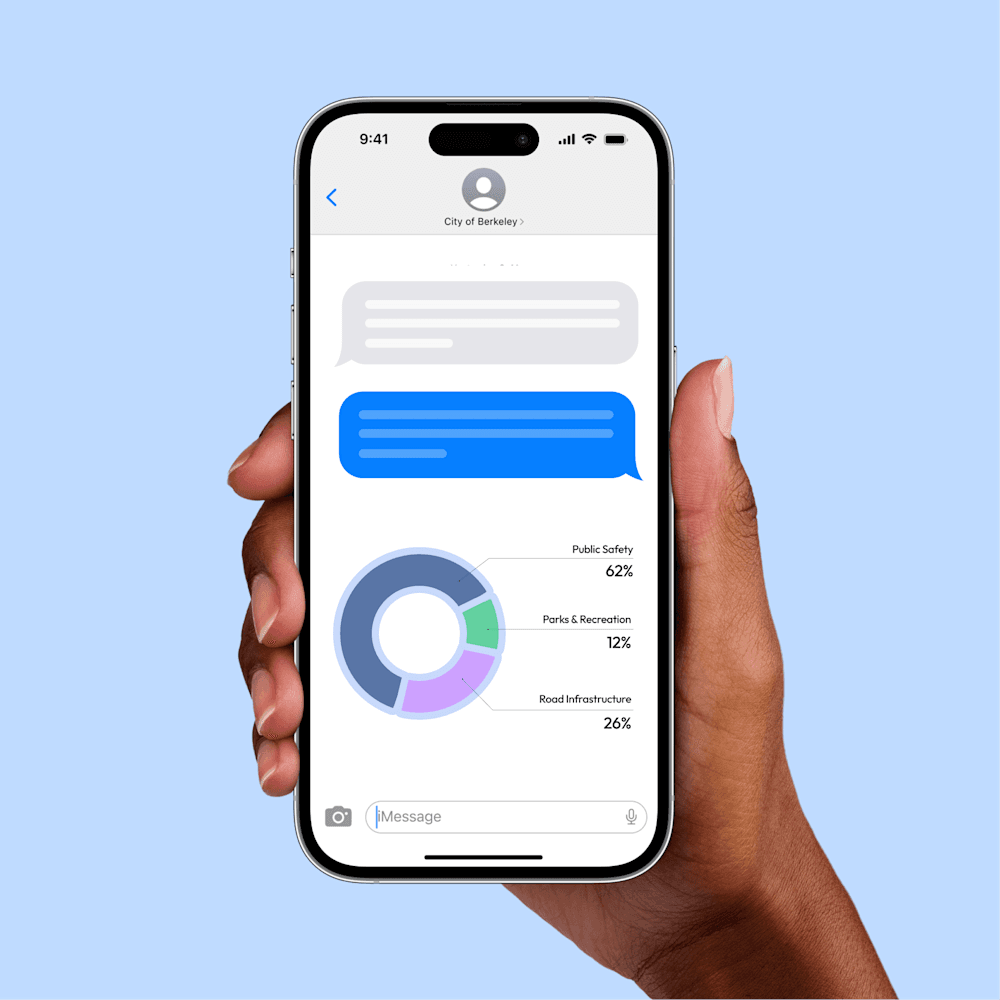
Community Engagement Strategies for Local Governments
Community engagement is the cornerstone of a healthy democracy. When residents and local governments collaborate, they create stronger, more connected communities. But true engagement goes beyond posting updates or holding annual meetings. It’s about building ongoing relationships based on trust, transparency, and two-way communication.
In this guide, we’ll explore practical community engagement strategies for local government leaders, how they differ from engagement in other sectors, and examples of how leaders can turn everyday interactions into meaningful public participation. Whether you’re an elected official, public servant, or engaged resident, these strategies can help make your community more responsive, inclusive, and informed.
What Is Community Engagement?
Community engagement is the process of working with residents to shape decisions, policies, and programs that affect their lives. It’s a key part of democratic governance and can take many forms, from public opinion polls and town hall meetings to neighborhood cleanups or virtual feedback tools.
Community engagement can look different when it's done by a local government, nonprofit, or business:
Nonprofits often focus on program participation or donor involvement.
Corporations may focus on brand reputation or community impact.
Local governments aim to strengthen civic trust by ensuring residents’ voices directly influence policy and decision-making.
When done well, community engagement fosters mutual respect between citizens and officials, turning the government into a partner, not just a provider.
Why Community Engagement Matters in Local Government
Local governments make decisions that impact daily life, affecting things like housing, parks, zoning, safety, and transportation. Without public input, those decisions risk missing the real priorities of the community.
Strong community engagement helps officials:
Build Trust and Legitimacy: When officials take time to listen, explain, and act on public input, people are more likely to trust that decisions are made in good faith. That trust is essential, especially at a time when many Americans feel disconnected from government.
Improve Decision Quality: Residents often see problems and opportunities that data alone can’t reveal. From traffic flow to public safety, local insights can help governments design smarter, more equitable policies.
Increase Civic Participation: Once people feel heard, they’re more likely to stay involved, showing up at public meetings, responding to surveys, or even running for office themselves.
Reduce Polarization: Open, structured dialogue helps bridge divides. When neighbors engage across differences in public spaces, it builds empathy and understanding that social media rarely allows.
Strengthen Democracy from the Ground Up: Engagement at the local level sets the tone for national civic health. When communities see that their voices matter in city hall, they’re more likely to believe their votes matter everywhere else.
“You frequently feel like you are operating in the dark. That's a constant,” said Cara Schulz, city councilmember from Burnsville, Minnesota.
Community engagement can help local leaders better understand the people they’re trying to serve.
At its core, it’s an act of trust-building. It transforms government from an institution that issues directives into a living partnership with every citizen.
LEARN MORE: Explore the power of civic engagement and why participation matters.
Top Community Engagement Strategies for Local Government
From digital surveys to in-person forums, there’s no single path to effective community engagement. What matters most is creating consistent opportunities for residents to be heard. These strategies can help local governments strengthen communication, collaboration, and public trust.
#1: Conduct Community Surveys
Community surveys help officials understand what residents care about most.
In-person meetings can be helpful, but what about the people who don’t or can’t show up?
“Capturing that response is kind of where we're missing because the people that come that are outspoken, it skews the response,” said Ty Miller, city councilmember from Palm Coast, Florida. “Trying to get as much feedback as possible that's more even and scientific and not just the result of one group being louder than another is a big priority, I think, for us.”
For instance, a small-town mayor might launch a quarterly survey to measure satisfaction with city services or gather input on upcoming infrastructure projects. Civic tech tools like GoodParty.org Serve make it easy to launch surveys, collect feedback, and analyze responses to inform local decisions. Surveys can also be conducted through social media or paper mailers to reach underrepresented populations.
LEARN MORE: Discover how public opinion polls shape policy and civic trust.
#2: Open Channels for Feedback
Transparent communication is essential for building trust. Governments can create open, ongoing channels for public feedback through tools like:
Opt-in email newsletters that share updates and invite responses
Dedicated feedback forms on municipal websites
Contact information for officials and staff made easy to find
Social media platforms used for dialogue, not just announcements
Encouraging two-way communication shows residents that their input matters and that leadership is listening instead of just broadcasting. Remember to make it clear how feedback will be used. When people see their ideas implemented, they’re more likely to stay engaged.
#3: Host Public Meetings and Town Halls
Town halls, public forums, and listening sessions remain among the most effective ways to connect residents and officials directly. These events allow citizens to ask questions, share ideas, and learn about community plans in real time. For example, a city council might hold a bilingual public forum on housing affordability to ensure diverse community voices are represented.
To make your public meetings accessible and inclusive:
Offer virtual or hybrid attendance options.
Use translators or closed captions for language accessibility.
Hold meetings at varying times and locations to reach more residents.
Structure for dialogue, not monologue, by using a moderator or facilitator to keep discussions productive.
Leave ample time for open Q&A.
Follow up afterward. Publish summaries, next steps, and answers to unanswered questions to show residents their time mattered.
Public meetings are where democracy gets personal. Every question asked, every idea shared, and every moment of listening helps turn public meetings into partnerships for progress.
LEARN MORE: See how to make the most of town hall meetings.
#4: Organize Free Community Events
Community engagement doesn’t always have to feel like politics. Local governments can build relationships with their citizens through free, informal events like:
Outdoor concerts or movie nights in local parks
Neighborhood cleanups or tree-planting days
Holiday celebrations or cultural festivals
Youth sports or “meet your council” community picnics
The City of Denver holds a “SunSET Concert Series” that combines live music, food trucks, and information booths about city programs, turning recreation into public engagement.
Events like this foster civic pride and strengthen connections between neighbors. When people see their government investing in shared spaces and experiences, they feel more ownership of their community’s future.
#5: Use Civic Technology to Boost Participation
Digital tools can help expand engagement beyond physical meetings or events. Online portals, participatory budgeting platforms, and feedback apps allow residents to contribute ideas anytime, anywhere.
For instance, an elected official using GoodParty.org Serve could collect input on which park projects residents want funded, then publish the results showing how those votes shaped budget priorities.
Civic technology also improves the local leaders’ reach:
“It's impossible, I think, to get a representative sample without using some sort of technology,” said Alisa Mercer, school board member of the Davis School District in Utah. “This has been a discussion through our school board. We send out a newsletter after every board meeting that gives an update of what we're doing, but that even doesn't go to all of our constituents because it only goes to people who are connected to the school district. So [without technology] we don't even have a way really, to connect with those people that live in my district but aren't connected to the school district.”
Civic tools help governments reach younger residents, shift workers, and people with limited mobility who might not attend in person. They also make participation data-driven and transparent.
LEARN MORE: Discover how civic technology strengthens democracy.
Community Engagement Examples in Action
Across the country, local governments are finding creative ways to make public engagement more accessible, equitable, and effective.
New York City’s Participatory Budgeting at Scale: New York City operates one of the largest participatory budgeting programs in the United States, where residents propose and vote on local projects ranging from school upgrades to community gardens. The process has funded millions of dollars of community-driven initiatives across all five boroughs.
Jersey City, NJ’s Real-Time Feedback Through SeeClickFix: Jersey City’s 311 system lets residents report non-emergency issues like potholes, graffiti, or broken lights directly to city departments. The open reporting dashboard shows which problems have been fixed, creating a transparent feedback loop that strengthens accountability.
Boston, MA’s City Hall on the Go: Boston’s mobile city services program brings local government services into neighborhoods through mobile vans that visit parks, libraries, and festivals. Residents can pay bills, apply for permits, or offer feedback without ever stepping inside City Hall.
Cleveland, OH’s Community Visioning for Development: Cleveland’s City Planning Commission regularly hosts community visioning sessions where residents use maps and design boards to shape upcoming development projects. This participatory approach has led to neighborhood plans that better reflect local priorities and values.
Austin, TX’s SpeakUp Austin: SpeakUp Austin is an online community engagement forum, allowing residents to submit ideas, upvote proposals, and comment on policies online. City departments use the feedback to guide initiatives on transportation, housing, and environmental sustainability.
Together, these community engagement examples highlight a central truth: people are eager to participate in democracy when given meaningful opportunities. From high-tech platforms to face-to-face conversations, the most effective community engagement strategies blend accessibility, accountability, and authenticity, building trust one interaction at a time.
How to Create a Community Engagement Plan
A strong community engagement plan turns good intentions into measurable action. It doesn’t have to be complicated, but it should be clear, consistent, and built with accountability in mind.
Here’s how to design one that works for your community:
Define Your Goals: Start by asking what you hope to achieve through engagement. Are you trying to understand public priorities? Build trust after a contentious issue? Gather feedback for a specific project? Keep your goals SMART: specific, measurable, achievable, relevant, and time-bound.
Identify Your Audiences: Different segments of your community have different needs and perspectives. A successful plan considers everyone. Use demographic data, local networks, and feedback tools to ensure your outreach reflects the full community, not just the loudest voices.
Choose the Right Engagement Methods: Not every tool fits every goal. Pair each objective with the strategy that best serves it. For instance, to collect broad input, try using online surveys, feedback forms, or SMS polls. On the other hand, to reach underrepresented groups, consider partnerships with schools, faith centers, or local nonprofits. Blending digital and in-person engagement helps ensure your plan reaches as many people as possible.
Communicate Clearly and Consistently: Transparency is key. Let residents know why you’re seeking input, how it will be used, and when they can expect results.
Measure, Reflect, and Adapt: Every engagement plan should include ways to evaluate success. Track metrics like the number of participants or survey responses, diversity of engagement, and the policy changes influenced by public input.
Close the Feedback Loop: Perhaps the most important step is showing residents how their input shaped real outcomes. Whether you publish a short summary, issue a follow-up video, or post project updates online, closing the loop turns participation into trust.
For local leaders, closing the feedback loop is crucial. “I feel like the biggest opportunity would be to try and educate either what we have done, what we are doing, and what we can't do, and here's why,” says Josh Stell, village trustee in the Village of Minooka, Illinois. “I feel like being able to educate could be one of the biggest avenues of opportunity.”
When people see their voices make a difference, they’re far more likely to stay involved in local politics and community events and encourage others, too.
A thoughtful community engagement plan doesn’t just collect opinions; it builds relationships. It creates a roadmap for collaboration that helps governments make better decisions, residents feel respected, and democracy thrive.
The Future of Public Engagement
Public engagement is evolving. As technology advances and communities diversify, local governments are finding new ways to listen, respond, and build consensus.
But the core principle remains timeless: people want to be heard. When leaders make engagement a habit, not a box to check, they help rebuild faith in democracy at every level.
At GoodParty.org, we’re building tools to make that easier. With GoodParty.org Serve, elected officials can launch surveys, gather feedback, and turn insights into action, all in one place.
Because democracy doesn’t just happen on election day, it happens every day when people and public servants listen to each other.
Ready to strengthen community engagement in your city? Start collecting feedback and building trust with your constituents using GoodParty.org Serve.

